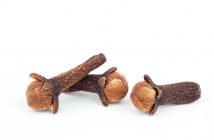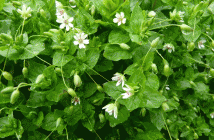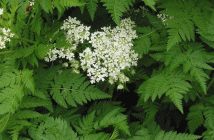 Sheep Sorrel is a small perennial classified in the same genus as the docks, but it is smaller and more delicate with foliage of a wholly different texture than typical docks. The basil leaves of sheep sorrel are rather succulent but not thick, borne on slightly grooved petioles, and are usually 1.5 – 3 inches (4-8 cm) in length. Widening towards the tip, they are typically lopsided with two lobes or flares at the base. The leaves of young plants usually do not have the flare at the base; instead, they are simply spoon-shaped. The surface of sheep sorrel’s leaf is covered with numerous structures that reflect sunlight, so that when one holds it up in the light and looks closely, it sparkles.
Sheep Sorrel is a small perennial classified in the same genus as the docks, but it is smaller and more delicate with foliage of a wholly different texture than typical docks. The basil leaves of sheep sorrel are rather succulent but not thick, borne on slightly grooved petioles, and are usually 1.5 – 3 inches (4-8 cm) in length. Widening towards the tip, they are typically lopsided with two lobes or flares at the base. The leaves of young plants usually do not have the flare at the base; instead, they are simply spoon-shaped. The surface of sheep sorrel’s leaf is covered with numerous structures that reflect sunlight, so that when one holds it up in the light and looks closely, it sparkles.
Sheep sorrel’s flowering stalks rarely exceed 14 inches (36 cm) in height. These have a few small leaves borne alternately upon the stem, clasping it with a papery sheath. The upper part of the stalk bears a loosely branched spike tiny green and reddish flowers. In early summer on often sees entire fields, or roadsides colored in a rusty hue from millions of these flowers.
There are other species of edible sorrel found rowing wild in North America. None are as widespread or common as sheep sorrel, but they may be as good or better for eating. The cultivated garden sorrel R. acetosa is a much larger cousin that has escaped and grows wild in the some parts of the Northeast. Wild sorrel, R. hastatulus, found in the southeastern United States, is very similar to sheep sorrel but somewhat larger.



